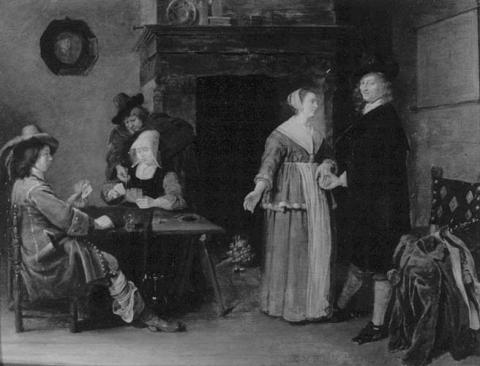The procedure
In letters dated 4 December 2006 and 7 December 2007, the Applicants asked the Minister of OCW for the return of a total of four paintings from the NK Collection. The works involved are registered under the inventory numbers NK 1532, NK 1747, NK 1750 and NK 2924. Pursuant to the requests for recommendation, the Committee investigated the facts. The preliminary results of the research into the facts of the admissible claim (NK 1747 and NK 2924) were recorded in a draft report dated 7 January 2008. The Committee submitted this draft report to the Minister and the Applicants. The Minister responded by email on 7 February 2008 and the Applicants replied in a letter dated 20 March 2008. The preliminary results of the research into the supplementary claim (NK 1532 and NK 1750) were combined with the earlier research results in a draft report dated 6 December 2010. This report was sent for comment to the Applicants, who responded substantively in a letter dated 29 April 2011. At their request, the Committee gave the Applicants the opportunity to conduct additional provenance research with regard to the works of art being claimed. In a letter of 1 July 2011, the Committee furthermore informed the Applicants about supplementary investigation data on its part. On 14 October 2011 the Applicants told the Committee that the provenance research conducted on their instructions had not generated any new information.
On 21 November 2011 the Committee then issued recommendation about three (NK 1532, NK 1747 and NK 1750) of the four paintings (RC 1.61-A) to the effect that the application for restitution should be rejected because these works could not be identified as works from the Arnhold collection. The Committee put and has kept the present recommendation with regard to NK 2924 in a separate file (RC 1.61-B) because this painting is also the subject of an application for restitution concerning the D. Katz gallery of Dieren (RC 1.90-B). The Committee gave the Applicants the opportunity to take cognizance of the relevant facts found in the Katz investigation that relate to NK 2924. After completion of the investigation concerning the Katz claim, with respect to the present application for restitution of NK 2924 the Committee approved the investigation report RC 1.61-B on 17 December 2012.
Applicants I and Applicant II were represented in the present procedure by Dr Sabine Rudolph, a lawyer of Dresden, Germany.
